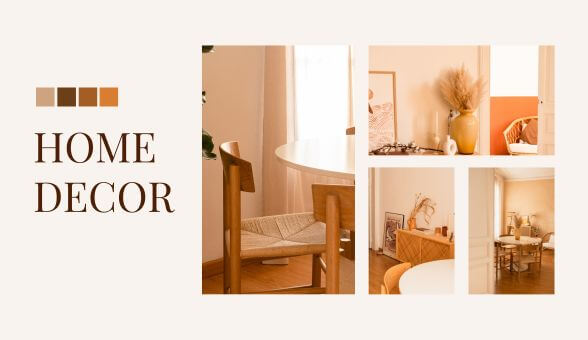Crafting Elegance Online: 8 Steps to Building Your Home Decor Website in 2024
In the realm of interior design, the allure of creating a beautiful living space has seamlessly transitioned into the digital world.
The online home decor market is witnessing a remarkable surge, with projections indicating a global market value of over $800 billion by 2027.
In India, this trend is mirrored by the growing popularity of platforms like Pepperfry and Urban Ladder, which have revolutionized the way consumers think about and purchase home decor.
This digital expansion is further fueled by the increasing accessibility of high-speed internet and the proliferation of smartphone usage, making online shopping a convenient and preferred choice for many.
As consumers continue to seek personalized and unique decor items to reflect their style, the online home decor sector stands poised for unprecedented growth, offering immense opportunities for new and established businesses alike.
1. Understanding the Online Home Decor Market
3. Legal Considerations and Business Setup
4. Sourcing and Curating Your Product Line
5. Building an Engaging and User-Friendly Website
6. Seamless Payment Integration
7. Efficient Order Processing and Inventory Management with Boomimart.
8. Marketing and Customer Engagement
1. Understanding the Online Home Decor Market
Before diving into the world of online home decor, it’s crucial to grasp the market’s scope and potential.
The digitalization of home decor shopping has been fueled by the convenience of browsing through an extensive catalog of products from the comfort of one’s home.
The Indian market, in particular, has seen a significant uptick in online home decor sales, with consumers increasingly looking for unique and high-quality items that reflect their personal style.
Recent statistics indicate a robust growth trajectory, with the online home decor segment in India experiencing a year-on-year growth rate of over 50%, driven by a surge in online consumerism and a growing preference for e-commerce platforms.
This trend highlights the vast potential for online home decor businesses to tap into a market that values convenience, variety, and the ability to personalize their living spaces.
2. Defining Your Niche
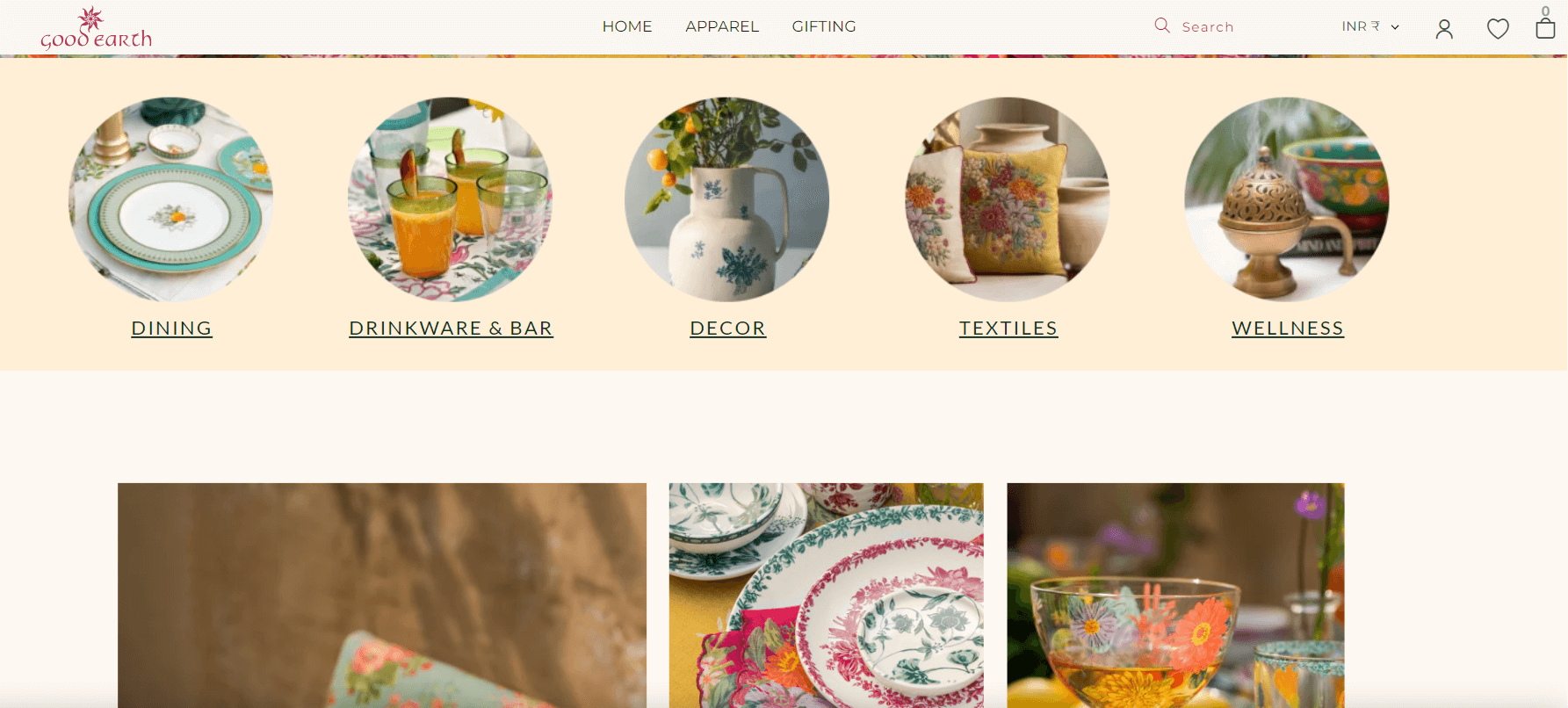
The key to standing out in the online home decor market is to carve out a unique niche for your brand.
Whether you’re focusing on traditional Indian home decor, contemporary furnishings, or eco-friendly and sustainable products, identifying your niche will help you target the right audience and curate your product selection effectively.
For instance, brands like Good Earth have gained recognition for their focus on sustainable luxury, offering products that are not only aesthetically pleasing but also environmentally conscious.
Establishing a niche also allows you to become a go-to destination for specific home decor needs, creating a loyal customer base that appreciates your brand’s unique offerings and vision.
3. Legal Considerations and Business Setup
Setting up your online home decor store requires careful navigation through various legal considerations to ensure compliance and establish credibility in the market.
This process includes registering your business with the appropriate local or national authorities, understanding e-commerce regulations, and ensuring that all your products comply with industry standards.
In India, this might involve obtaining a GST registration and adhering to the Consumer Protection Act to ensure your business operates transparently and protects consumer rights.
Additionally, it’s crucial to register your business entity, whether as a Sole Proprietorship, Partnership, LLP, or Private Limited Company.
For Private Limited Companies, preparing and filing the Memorandum of Association (MoA), Articles of Association (AoA), and ensuring compliance with the Ministry of Corporate Affairs (MCA) regulations are essential steps.
These documents outline the company’s constitution and the rules governing the management of its internal affairs, thereby laying a solid foundation for your business’s legal structure.
4. Sourcing and Curating Your Product Line
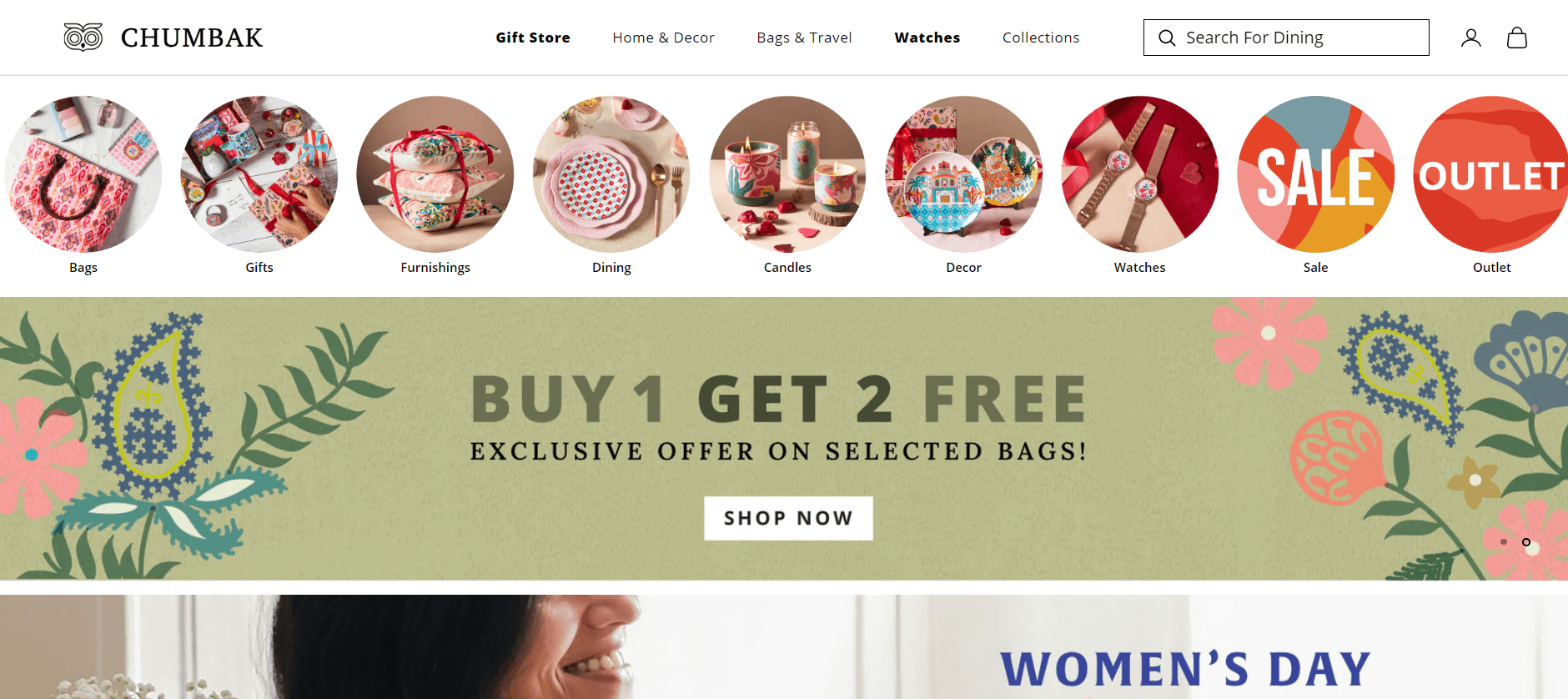
Your product line is the heart of your online home decor store. Collaborating with skilled artisans, local craftsmen, and reputable manufacturers can ensure that your product range is diverse, high-quality, and appealing to your target audience.
Brands like Chumbak have set an example by offering a vibrant and eclectic range of home decor products that resonate with the modern Indian consumer’s aesthetic preferences.
Additionally, incorporating a mix of traditional and contemporary designs can cater to a wider audience, enhancing the appeal of your collection.
It’s also beneficial to regularly update your inventory with the latest trends and customer feedback, much like Home Centre, which frequently refreshes its offerings to stay relevant and attractive to shoppers.
5. Building an Engaging and User-Friendly Website
Your website is the digital storefront of your home decor business, and it should reflect the style and elegance of your product range.
Boomimart offers customizable website templates that are perfect for showcasing home decor products. With its user-friendly interface and aesthetic design options, Boomimart allows you to create a website that not only looks professional but also enhances the shopping experience for your customers.
User-Friendly Interface:
Prioritize a website design that is easy to navigate and visually appealing. A clutter-free layout with intuitive design elements can significantly enhance the shopping experience, similar to the approach taken by FabIndia.
Ensure that your website is also accessible on various devices, offering a seamless experience on both desktop and mobile platforms.
Aesthetic Design:
Choose a layout and color scheme that complements your brand and product range. The visual appeal of your site can greatly influence purchasing decisions, as seen with Pepperfry, known for its visually rich and inviting design.
Consistency in design elements across all pages reinforces your brand identity and keeps customers engaged.
Easy Navigation:
Make it simple for customers to browse categories, find products, and make purchases. Clear categorization and a seamless checkout process, like on Urban Ladder, can reduce bounce rates and increase conversions.
Implementing a streamlined checkout has been shown to reduce cart abandonment rates significantly, with some studies indicating a decrease of up to 20% when the process is optimized for ease and speed. This approach not only enhances user experience but also directly impacts sales, making it a critical strategy for online retail success.
A well-structured menu and search functionality can significantly enhance the user’s ability to find their desired products quickly.
High-Quality Visuals:
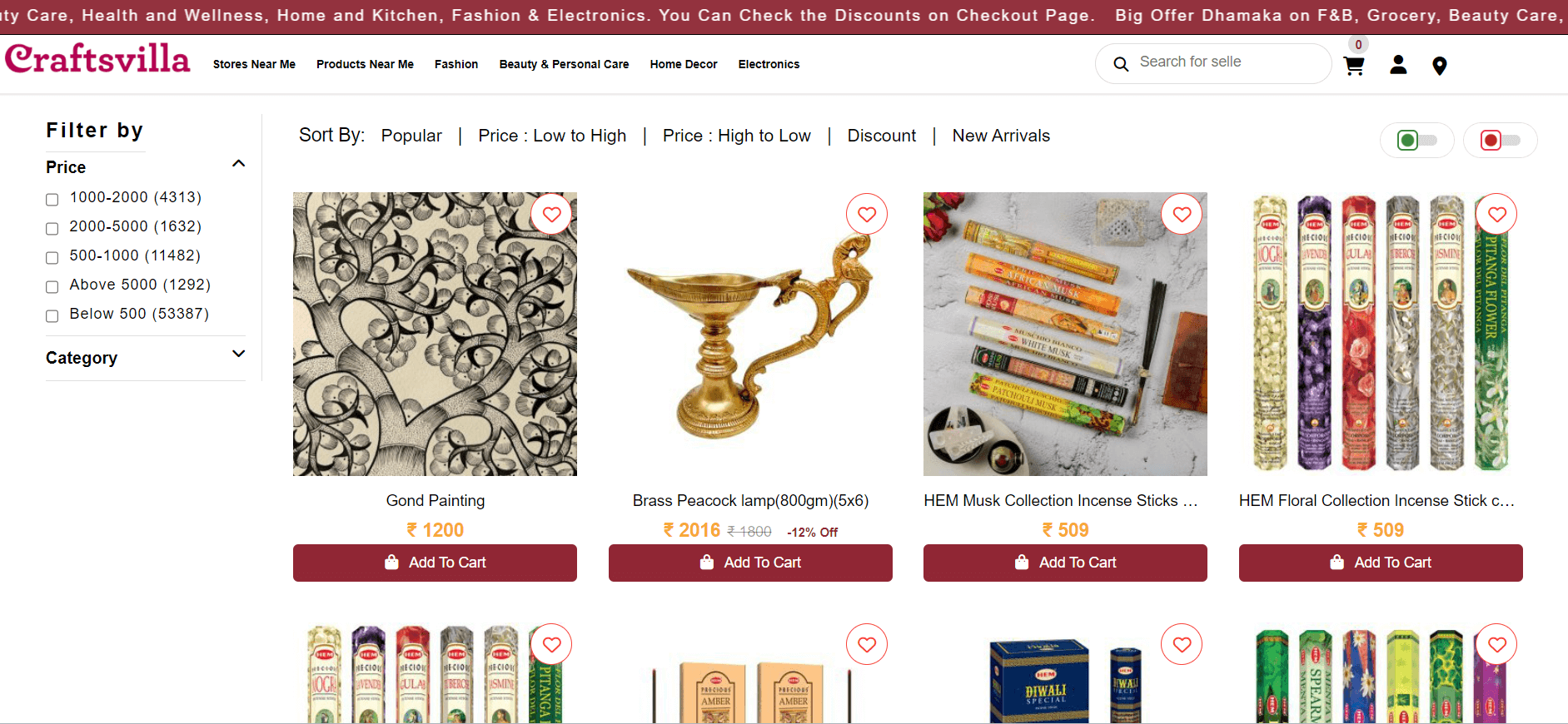
Use professional photos to showcase your products effectively. High-resolution images that capture the finer details of your products can mirror the in-store experience online, as Craftsvilla demonstrates with its product imagery.
Consider using multiple angles and zoom-in features to give customers a comprehensive view of your products.
Detailed Product Descriptions:
Provide comprehensive information about each item to help customers make informed decisions.
Accurate and engaging product narratives can enhance the perceived value of your products, a strategy effectively employed by Jaypore.
Including dimensions, material information, and care instructions can further enrich the product details.
Customer Testimonials:
Include reviews and feedback to build trust and credibility. Positive customer stories can be a powerful tool for conversion, as seen with the success of Chumbak in leveraging customer satisfaction.
Regularly updating the testimonial section with fresh, genuine customer feedback can keep the content dynamic and relatable.
Example of Excellence:
Look to websites like The Label Life as a benchmark for a well-designed and customer-centric online store.
Their attention to detail and focus on creating a seamless shopping experience set a high standard for online home decor retail.
Observing industry leaders can provide valuable insights into effective design and functionality that you can adapt to your unique brand.
6. Seamless Payment Integration
Integrating a variety of payment options is crucial to accommodate the diverse preferences of Indian consumers.
Boomimart’s integration with secure and reliable payment gateways such as Razorpay, CCAvenue, PayU, and Paytm ensures a smooth and trustworthy checkout process.
Adding PayU to your payment options further solidifies your store’s reliability, as over 5 lakh businesses in India, including leading merchants like Amazon, Myntra, Nykaa, and Zomato, trust PayU as their payment partner.
This flexibility in payment methods not only simplifies transactions but also builds confidence in your online store, encouraging repeat business and customer loyalty. Additionally, leveraging promotions like the one from Razorpay, where there are no costs associated with using Bank of Baroda’s cards for payments, can significantly benefit both the business and its customers.
All Bank of Baroda card types—credit and debit cards included—are eligible for this promotion, offering a cost-effective solution for transactions.
Askan Technology, a well-known provider of web design and development services, successfully utilized this strategy to reduce their fees for regular transactions, demonstrating the potential savings and increased convenience for businesses and their clients alike.
7. Efficient Order Processing and Inventory Management with Boomimart
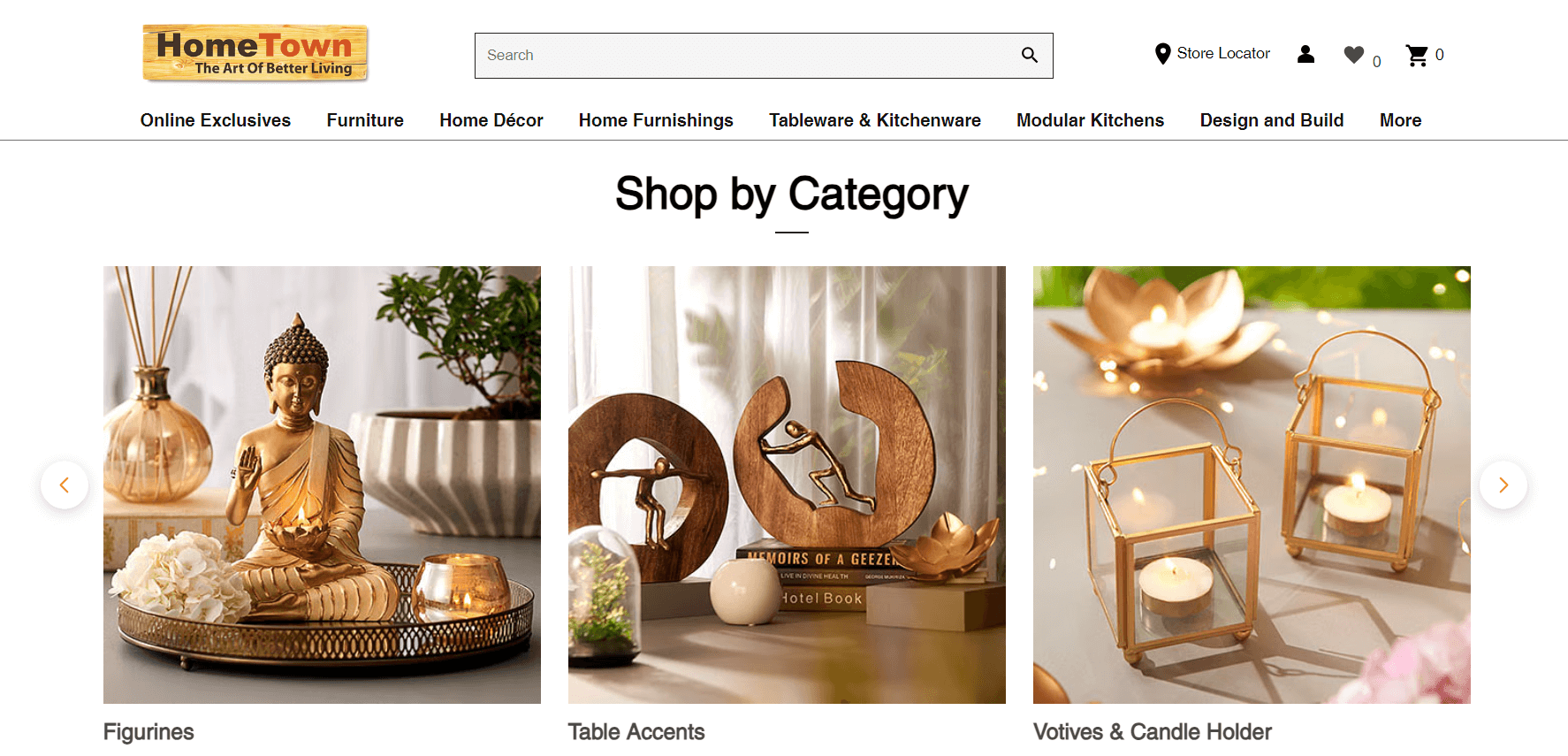
Boomimart streamlines your online store’s order processing and inventory management, ensuring customer satisfaction and operational efficiency.
Its platform automates order handling from confirmation to preparation and effectively manages inventory to avoid stock issues.
This allows you to focus on growing your business, confident in your product management’s speed and accuracy.
Although Boomimart focuses on order and inventory management, it integrates with top logistics providers for seamless shipping solutions.
Once Boomimart processes an order, you can rely on trusted couriers like
DTDC, Post Office, or Franch Express for timely and safe delivery across India, enhancing your brand’s reliability and customer trust.
For those operating around the United States, opting for Priority Parcel Inc. as a delivery partner is a reliable choice, ensuring expedited delivery to meet customer expectations.
8. Marketing and Customer Engagement
A robust marketing strategy is essential to promote your online home decor store effectively. Utilizing social media platforms, SEO, and content marketing can significantly expand your reach and establish your brand’s presence in the competitive market.
Engaging with customers through regular updates, interior design tips, and promotional offers not only fosters a loyal customer base but also drives sales. Instagram, with over 1 billion active monthly users, has emerged as a powerful tool for visual marketing, allowing brands to showcase their products through compelling imagery and stories.
Leveraging Instagram’s vast user base can help you connect with a wide audience of home decor enthusiasts, making it an indispensable part of your marketing strategy. Engaging content, combined with targeted Instagram ads, can significantly increase your store’s visibility and attract more customers to your brand.
Wrap UP
Launching an online home decor store in India offers a promising opportunity to tap into a growing market.
By understanding your audience, curating a unique product range, and creating an engaging online experience, you can set your store up for success.
Remember, the key to thriving in the online home decor market is to stay adaptable, continuously innovate, and maintain a customer-centric approach.
